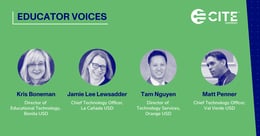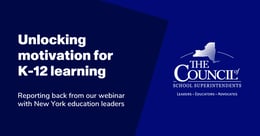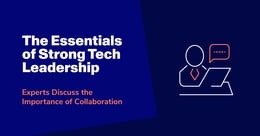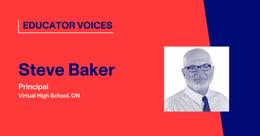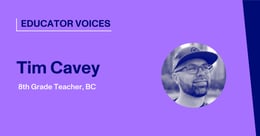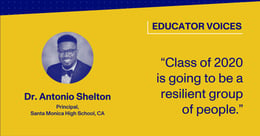
California reopenings: Snapshots from Orange Unified
The reopening of hundreds of Orange County schools for some level of in-person instruction since September had marked one of the largest returns to schooling in the state. Since then, the rest of California has been watching intently, or following suit.
[READ: Orange Unified Expands 24/7 Academic Support: From 194 students to 10,000 to 16,0000]
At Orange Unified School District, a recent update from the district superintendent read: “We are pleased to share that minimal impacts to our on-campus programs have occurred as a result of COVID-19 [...] Regardless, staff continues to track data to ensure we are mindful of the ever-evolving case rates in Orange County.”
Many of the school districts that have physically reopened, like Orange Unified, have transitioned to in-person learning in phases, beginning with younger students. At the beginning of October, Orange Unified elementary and middle school students were finally back on campus. On October 20, high school students transitioned back in-person too.
[READ: Orange Unified's 2020-2021 Safety & Health-driven School Reopening Plan]
In this interview, edited for length and clarity, Lisa Green, Executive Director, K-12 Curriculum, Instruction & School Support at Orange Unified, shares how her district is making things work by providing flexible options for learning, expanding academic supports for students, and preparing them for post-secondary success.
Can you describe what back to school has been like this year?
Our number one priority is that students get the instruction they need. That’s why we’ve allowed the opportunity for our families to choose what they’re comfortable with. At our elementary school, we provide the opportunity for parents to choose from three different models: Full-day in-person, full-day online, or a hybrid model.
With hybrid, parents can choose to have students at school for half the day for the core instruction of ELA, math, science, and social studies, and then they would go home to do the rest of their work and activities online. Our teachers have been live streaming, so when they do their core instruction, they have their students on a Google Meets or Zoom, along with their students in-person. That way, they can all have that classroom environment and also interact for that socio-emotional wellbeing.
Middle and high school is a little different. We are in a hybrid model for middle school and high school, and we’re also in what’s called a Slice Block, where students do their even classes for the first half of the semester and switch to their odd courses for the second half. This blocking allows teachers more time in a day to dedicate to students and also lessens the chances for cohorts to intermingle.
And then we are on an A/B model alongside this. So in a class of 40 students, 20 of them would be in-person on Monday and Tuesday, and the other 20 would be in-person on Thursday and Friday. On Wednesdays, it’s a virtual-only day. So, every day, our high school teachers in school are live streaming, so the cohort that’s at home can join. This allows all students to get live, synchronous instruction every day.
How is your district thinking about balancing the disruptions caused by COVID-19 and the wildfires, as well as making sure that seniors are ready to graduate & prepared for post-secondary success?
Our career counseling coordinator at the district has been working very closely with our school counselors — they've created Google sites for all of their students to get the information they need about things like financial aid. We also have a new program called Zello, where students can do virtual tours of colleges. They have this 360-degree camera that makes it feel like you're walking on the campus.
We’ve been doing a lot of professional development with our counselors and looking at whether our students are completing the courses they need to be able to enroll in the California state college system. We’re looking at how we can support them, which is why we do appreciate the opportunity to utilize Paper™, because students can get that tutoring to help close those gaps.
Our biggest fear is the equity gap is going to grow even more. So we want to make sure that students have equitable access to their courses and what they need to be successful in them.
We have to give kudos to our counselors for calling students and families. We're all hands on deck at Orange Unified. All of our counselors, teachers, and administration — we're all reaching out continuously.
We also have strong CTE (Career Technical Education) programs at our schools, and those must continue because they're giving students insight into careers they might be interested in. We don't want our students to go to college and get their degree in one area and realize that wasn't the area for them. We're holding PLC (Professional Learning Community) meetings so that teachers can discuss across schools what they are doing to ensure that students are still meeting the standards they need to meet.
Also, we've been continuing our professional internship classes. It’s hard when there aren't many businesses saying, "hey, let's bring kids in for professional internships right now." But we totally revamped that, and we've been doing virtual professional internships. Our students are still getting a ton of experience: they have tasks, guest speakers, and interviews with people in the industry.
What prompted the decision to go from 194 students at Orange High School to a district-wide partnership with over 10,000 students?
We always say when a student keeps working on an assignment and they don't understand it fully, it imprints the incorrect information on their brain.
If they're doing a math problem wrong and they don't know how to do it right, and they keep doing it in the wrong way, it's imprinting in their mind the wrong way to do something. So, with Paper, the second they realize that they're struggling, they have instant access to a tutor to get steered onto the correct path.
Also, we are an AVID district, and we are always encouraging our teachers to use the Paper Method of questioning rather than giving students the answers.
I really like how the Paper program ... uses that [Paper] Method to really get students to come to the answer themselves. It's almost modeling for them how they should be thinking things through ... when they struggle. So hopefully, even beyond using the program, it will help build that ability within them to rethink things through their mind.
After piloting last year at Orange High and getting great feedback from students, we decided to implement Paper at all of our high schools once distance learning started in the spring. Many of our families were looking for tutoring support, and although some of our community colleges offer free tutoring, those filled up quickly, and they were not as in the moment as we would've liked.
We've been really excited about getting Paper into our schools, and we've been receiving some really positive feedback from parents that this is what their kids needed.
Why is Orange Unified now deciding to also cover students in grades 4-6, bringing the total number of students with access to Paper to over 16,000?
As some parents started to post about Paper on social media, we began to have some of our upper-grade elementary parents ask, "what about my kids? My kids are struggling too." That's when we started the conversation around this being something our fourth, fifth, and sixth-grade students could get use out of.
The essay writing. I think that's going to be huge. My own son is in 6th grade, and so on his report card ... the teacher says: "You need to elaborate more with your writing. You need to do more with your writing." I'm an educator, but as a working parent—both my husband and I work, and we've got two kids, and there's just so much going on right now—just finding that time to sit down with them and to go through their writing assignments with them [is difficult].
But maybe our teachers, just as part of the writing process, can say: "OK, so you've done your rough draft. You've gone over it and reviewed it. Now, submit it to Paper to get some suggestions about how you can do it better." I think that's something that teachers [and students] will find very helpful.

